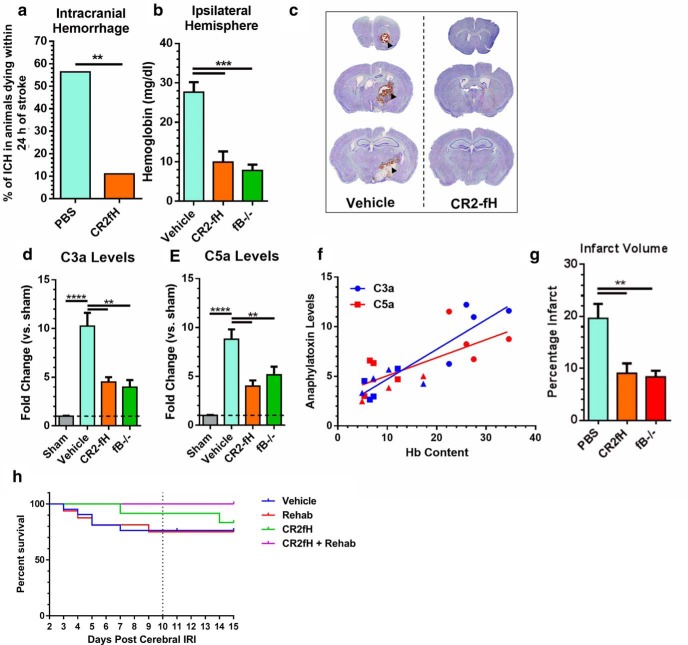Figure 1.
CR2fH treatment reduces intracranial hemorrhage and infarct acutely after stroke. a, Percentage of animals dying within 24 h of stroke that had intracranial hemorrhage between vehicle- and CR2fH-treated animals. Population proportion statistic, **p < 0.01. b, CR2fH treatment and fB deficiency significantly reduce hemoglobin content in the ipsilateral hemisphere 12 h after MCAO compared with vehicle. One-way ANOVA, Dunnett's multiple comparisons. n = 4/group, ***p < 0.001. c, Representative images of Nissl-stained brain sections showing peri-infarct intracerebral hemorrhage in vehicle controls but not in CR2fH-treated animals (90 min after MCAO administration). d, e, C3a and C5a ELISAs showing a significant reduction of MCAO-induced C3a and C5a generation by CR2fH treatment (90 min after MCAO administration) or fB deficiency 24 h after MCAO. One-way ANOVA, Tukey's multiple comparisons. n = 4/group, ****p < 0.0001, **p < 0.01. f, Correlation of hemoglobin content in the ipsilateral hemisphere with C3a levels (blue line, Pearson's correlation r2 = 0.800, p < 0.001) and C5a levels (red line, Pearson's correlation r2 = 0.5071, p < 0.001). g, Both CR2fH treatment and fB deficiency significantly reduced acute infarct volume quantified from Triphenyl tetrazolium chloride-stained 2-mm-thick brain slices 24 h after stroke. h, Mortality after MCAO and randomization to rehabilitation or regular housing. Kaplan–Meyer curve shows no significant difference between the groups. n = 21 vehicle, n = 16 rehabilitation, n = 12 CR2fH, and n = 12 CR2fH + rehabilitation.

